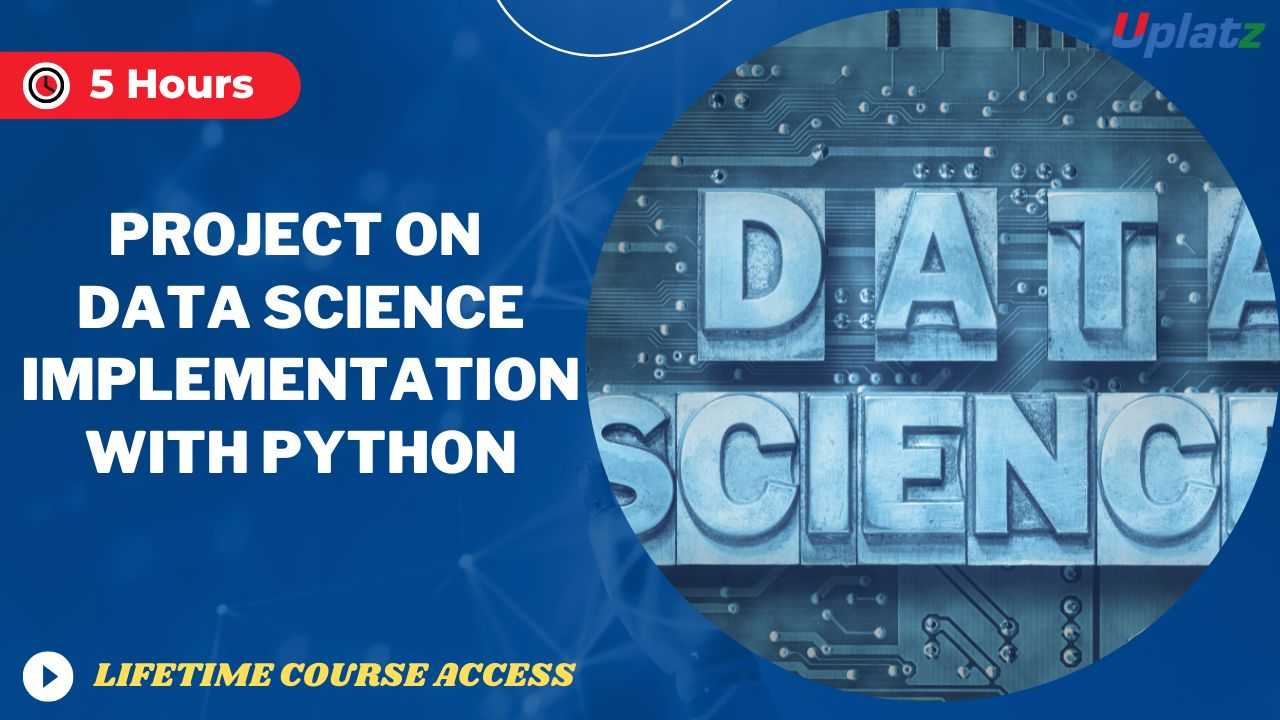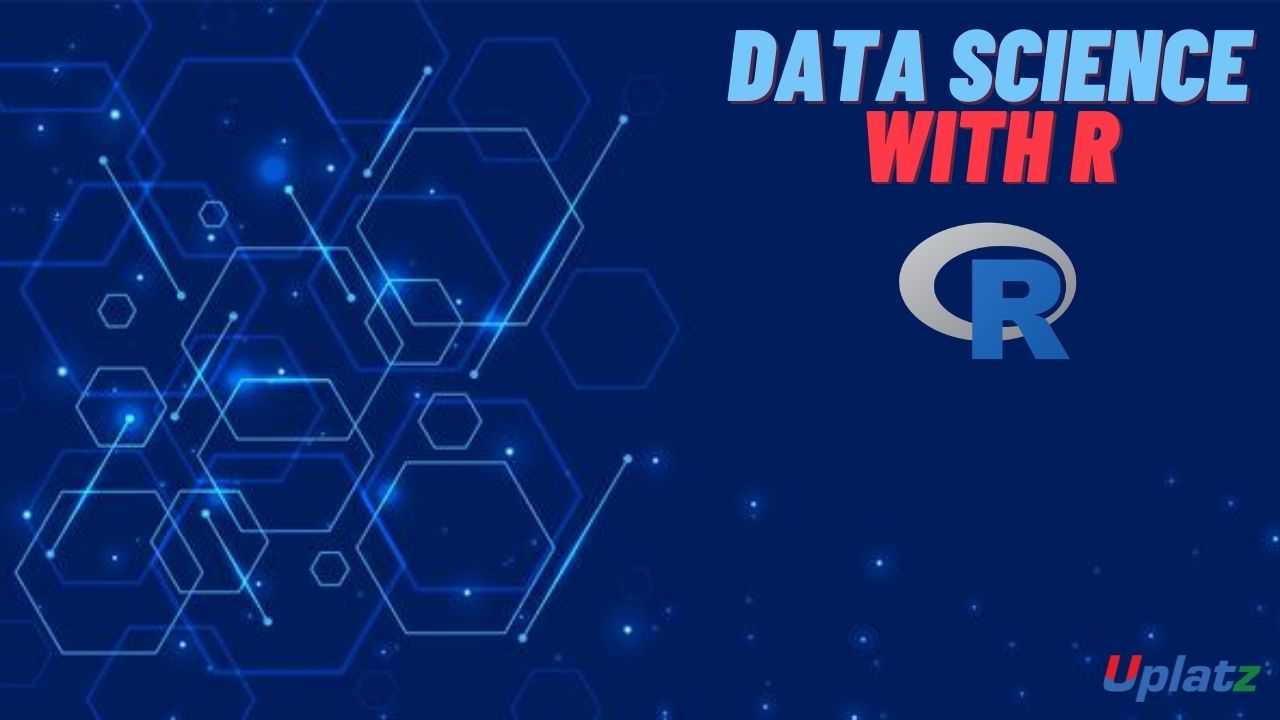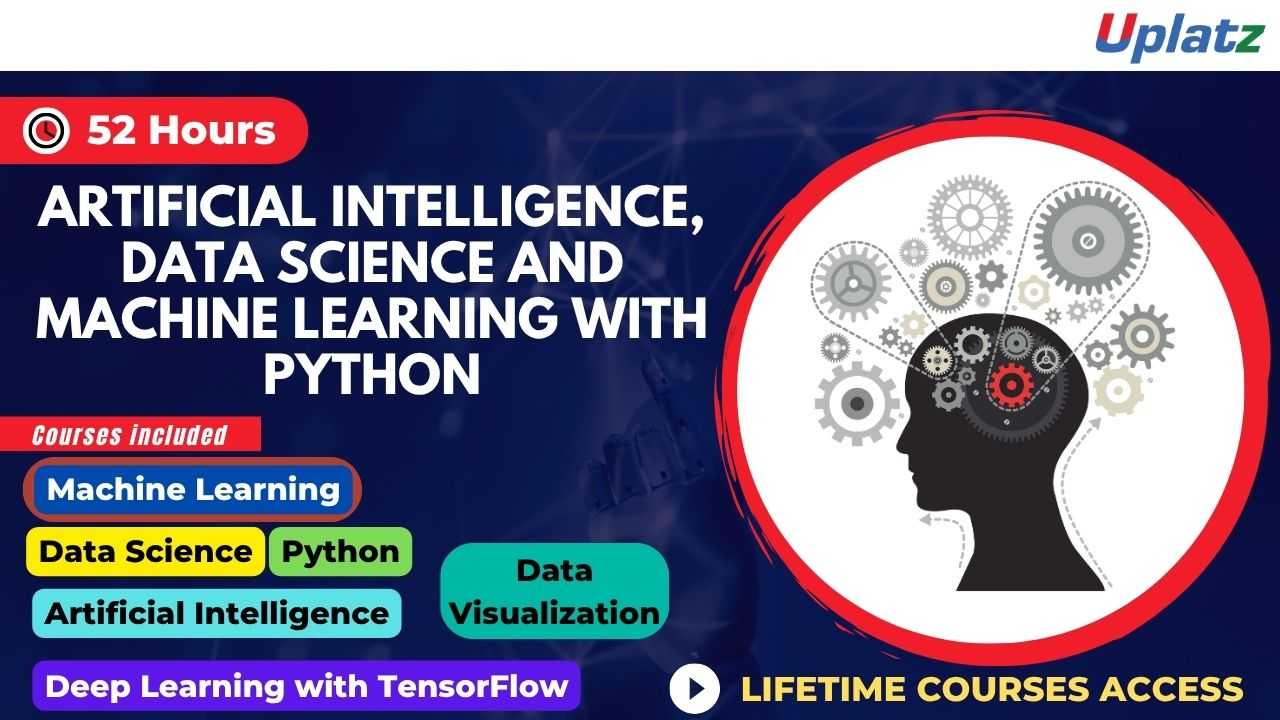Project on Data Science Implementation with Python
Master Real-World Data Science Applications with Python Through Hands-On Projects – From Data Cleaning to Predictive Modeling View Course Curriculum
Price Match Guarantee
Full Lifetime Access
Access on any Device
Technical Support
Secure Checkout
Course Completion Certificate
View Course Curriculum
Price Match Guarantee
Full Lifetime Access
Access on any Device
Technical Support
Secure Checkout
Course Completion Certificate
 95% Started a new career
BUY THIS COURSE (
95% Started a new career
BUY THIS COURSE (GBP 12 GBP 29 )-
 96% Got a pay increase and promotion
96% Got a pay increase and promotion
Students also bought -
-

- Data Science with R
- 25 Hours
- GBP 12
- 479 Learners
-

- Artificial Intelligence, Data Science, and Machine Learning with Python
- 52 Hours
- GBP 12
- 5867 Learners
-

- Career Accelerator - Head of Data, Analytics, and Machine Learning
- 200 Hours
- GBP 32
- 650 Learners

Project on Data Science Implementation with Python is a self-paced – Online Course
Project on Data Science Implementation with Python is a self-paced, hands-on online training program designed for aspiring and early-career data scientists who want to go beyond theory and apply their skills in real-world scenarios. Through this practical, project-based course, learners gain essential experience by working on an end-to-end implementation of a Loan Prediction Project, one of the most relevant and common applications in the financial services industry.
This course is not just about learning Python or understanding data science concepts in isolation. Instead, it focuses on integrating data science workflows into a coherent, project-driven structure that mirrors the actual job responsibilities of a data scientist. From data cleaning and preprocessing to exploratory data analysis (EDA), feature engineering, model training, hyperparameter tuning, and evaluation, each phase is covered thoroughly with expert guidance.
Delivered through high-quality pre-recorded video sessions, the course allows you to learn at your own pace and revisit concepts anytime. You’ll learn how to write clean, efficient code, visualize insights, and build predictive models using Python's most powerful libraries, including pandas, NumPy, matplotlib, seaborn, scikit-learn, and more.
On successful completion, you will receive a Course Completion Certificate, which you can showcase on your resume, LinkedIn profile, or professional portfolio to highlight your applied data science capabilities.
Why This Course Stands Out
While many data science courses are heavy on theory and light on real-world context, this program flips the script. It focuses on implementation—a crucial skill set hiring managers are looking for today. By guiding you through a real project from start to finish, this course builds the kind of confidence and competence that only comes from practical experience.
You will not only learn how data science models work, but more importantly, you'll understand how to apply them to solve meaningful business problems, communicate results effectively, and prepare your code and findings for production-level deployment.
The central case study—a loan default prediction project—represents a classic machine learning application with real-life stakes. It provides the ideal framework to practice key concepts like data preprocessing, handling missing values, outlier detection, statistical insights, categorical encoding, model selection, and performance metrics such as accuracy, precision, recall, F1-score, and ROC-AUC.
Whether you're preparing for a data science job, aiming to transition from another role, or seeking to sharpen your implementation skills, this course offers the right balance of depth, practicality, and flexibility.
Who Should Take This Course
This course is ideal for:
- Aspiring data scientists or machine learning engineers looking to build practical experience
- Python programmers who want to specialize in data science and analytics
- Graduates or students with a theoretical background in data science or statistics, seeking hands-on exposure
- Working professionals transitioning into analytics or data science roles
- Anyone preparing for technical interviews where real-world project experience is a strong differentiator
Whether you’re just starting out or brushing up on project-level skills, this course gives you the structure and content you need to succeed.
How to Use This Course
To make the most of your learning experience, follow these recommended steps for navigating and engaging with the course content:
1. Set Up Your Environment First
Before diving into the videos, set up your local Python environment using tools such as Anaconda, Jupyter Notebook, or VS Code. The course walks you through the tools you'll need, but having everything ready ahead of time will help you code along seamlessly.
2. Follow the Videos Step-by-Step
Watch the video sessions in order, as each step builds upon the last. Pause frequently, take notes, and be sure to code along with the instructor. Hands-on practice is key to solidifying your understanding.
3. Replicate and Experiment with the Code
Don’t just replicate what’s in the video—experiment. Change parameters, add new features, tweak models, and test different strategies. This experimentation helps transform passive watching into active learning.
4. Use Real-Time Documentation
As you go through the modules, keep the official documentation for libraries like pandas, matplotlib, and scikit-learn open in a browser tab. This habit not only helps clarify concepts but also builds good practices for real-world problem-solving.
5. Pause and Reflect on Each Phase
After each major section—EDA, preprocessing, model training, etc.—take time to reflect. Ask yourself:
- What was the goal of this phase?
- What tools did I use and why?
- How would I explain this step to a colleague or interviewer?
These reflections deepen your comprehension and prepare you for communicating your results clearly.
6. Document Your Work
As you build the project, maintain your own version of the Jupyter Notebook with detailed comments and markdown explanations. This becomes a valuable artifact for interviews, presentations, or GitHub portfolios.
7. Explore Additional Datasets
Once you finish the core loan prediction project, try applying the same workflow to a different dataset (e.g., from Kaggle or UCI Machine Learning Repository). This extends your learning and builds confidence in tackling new problems.
8. Ask Questions and Engage in Communities
Although the course is self-paced, you can enhance your learning by engaging in online forums like Stack Overflow, GitHub Discussions, or data science communities on LinkedIn and Reddit. Share your project, ask for feedback, or explore how others approach similar problems.
9. Review Key Concepts Before Interviews
If you’re preparing for job interviews, revisit key modules such as data cleaning, feature selection, and model evaluation. Be prepared to explain your workflow, reasoning, and results—this course gives you all the foundation you need.
What You Will Achieve
By the end of this course, you will:
- Complete a full-cycle machine learning project using real-world data
- Gain practical experience in data preparation, visualization, modeling, and evaluation
- Understand how to handle common issues like missing data, categorical variables, and imbalanced datasets
- Be able to apply Python-based tools and libraries to solve predictive modeling problems
- Build a personal project portfolio to showcase your data science capabilities
- Be well-prepared for technical interviews and real-world job roles
- Receive a Course Completion Certificate that validates your practical expertise
This is not just a course—it’s a launchpad for your data science journey, designed to bridge the gap between theory and application in the most effective way possible.
By the end of this course, learners will be able to:
- Understand the End-to-End Data Science Workflow – From problem definition to model deployment.
- Apply Data Cleaning Techniques – Handle missing values, outliers, and inconsistencies in datasets.
- Perform Exploratory Data Analysis (EDA) – Visualize data distributions, correlations, and patterns.
- Engineer Features for Better Predictions – Transform raw data into meaningful features.
- Build and Train Machine Learning Models – Implement algorithms like Logistic Regression, Decision Trees, and Random Forests.
- Evaluate Model Performance – Use metrics like accuracy, precision, recall, and ROC-AUC.
- Interpret Results for Decision-Making – Translate model outputs into actionable insights.
- Deploy a Simple Predictive Model – Learn basics of model deployment using Flask or Streamlit.
- Document and Present Findings – Create a professional project report and presentation.
Lecture 1: Introduction to Loan Prediction Project
- Problem statement and business context
- Dataset overview and initial exploration
- Setting up the Python environment (Jupyter, Pandas, NumPy)
Lecture 2: Data Cleaning and Preprocessing
- Handling missing values and outliers
- Categorical data encoding (One-Hot, Label Encoding)
- Feature scaling and normalization
Lecture 3: Exploratory Data Analysis (EDA) and Visualization
- Univariate and bivariate analysis
- Correlation matrices and heatmaps
- Visualizations using Matplotlib and Seaborn
Lecture 4: Feature Engineering and Selection
- Creating new features (e.g., debt-to-income ratio)
- Feature importance analysis
- Dimensionality reduction (PCA, if applicable)
Lecture 5: Model Building and Evaluation
- Splitting data into train/test sets
- Implementing algorithms (Logistic Regression, Decision Trees, Random Forests)
- Hyperparameter tuning (GridSearchCV)
- Performance metrics and confusion matrices
Upon successful completion of the Project on Data Science Implementation with Python course, learners will receive a Course Completion Certificate from Uplatz, validating their hands-on skills in data science and Python programming. This certification demonstrates your ability to tackle real-world data problems, from data wrangling to predictive modeling, making you a competitive candidate for roles in data science, analytics, and AI.
Completing this course opens doors to various roles in the data-driven industry, including:
- Data Scientist
- Machine Learning Engineer
- Data Analyst
- Business Intelligence Analyst
- AI Research Assistant
Industries like finance, healthcare, e-commerce, and marketing actively seek professionals with hands-on data science skills.
- How did you approach data cleaning in your loan prediction project?
I began by identifying missing values, outliers, and inconsistencies in the dataset. For missing data, I used techniques like mean/median imputation for numerical features and mode imputation for categorical ones. Outliers were handled using IQR (Interquartile Range) or domain-specific thresholds. I also standardized formats (e.g., date columns) and removed duplicates to ensure data integrity. - What feature engineering techniques did you apply, and why?
I created new features such as debt-to-income ratio (Total Debt / Income) to capture financial health, and loan-to-value ratio (Loan Amount / Asset Value) for risk assessment. Categorical variables like employment type were encoded using One-Hot Encoding to preserve meaning. Feature scaling (StandardScaler) was applied to normalize numerical features for model stability. - How did you select the best model for your loan prediction problem?
I tested multiple algorithms (Logistic Regression, Decision Trees, Random Forests) and compared their performance using metrics like accuracy, precision, recall, and ROC-AUC. Random Forest performed best due to its ability to handle non-linear relationships and feature importance insights. Hyperparameter tuning (GridSearchCV) further optimized the model.









